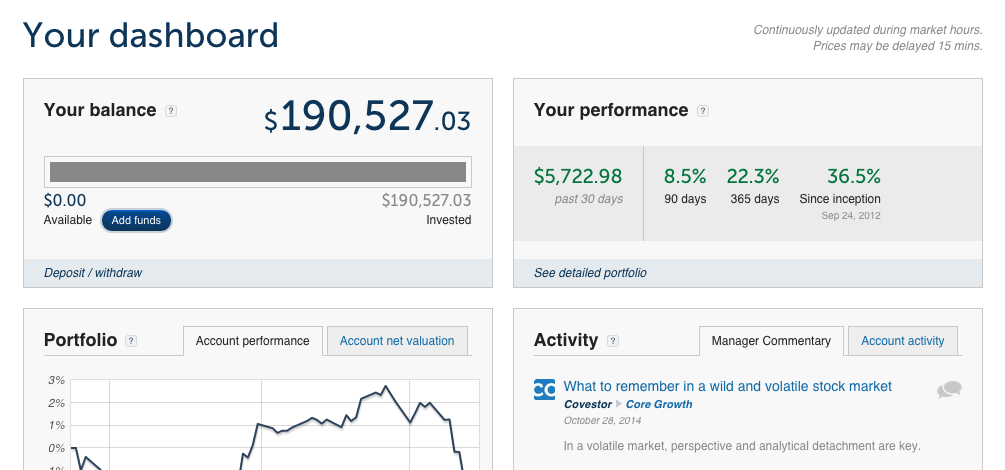Covestor model manager Alex Denegan strives for long-term success and reduced downside risk in his Quanitative Optimization model. To manage these goals he uses ETFs to create a diverse portfolio along with quantitative asset allocation.
The top holding in the model is iShares S&P/Citigroup International Treasury Bond Fund (IGOV), a fund that looks to mirror the performance of the S&P/Citigroup International Treasury Bond index Ex US. As such, at least 80 percent of the assets of the fund are invested in assets also on the index. The other 20 percent of the fund’s assets are either invested in cash, cash equivalents or derivatives that are expected to perform like the index. On September 20th, 2010, the fund was trading at a .42 percent premium to NAV.
The next greatest holding is iShares Russell 2000 Index Fund (IWM), which has a performance meant to mirror the Russell 2000 index, a subset of the Russell 3000 index that measures the performance of U.S. small cap equities. At least 90 percent of the fund’s assets are invested in positions that are on the Russell 2000 index. On September 20th, 2010, the fund was trading at a .08 percent discount to NAV.
Lastly, we have iShares MSCI Emerging Markets Index Fund (EEM). EEM attempts to create a similar performance as is seen in the MSCI Emerging Markets index. In general, at least 90 percent of the underlying assets are comprised of ADRs and GDRs that are on the MSCI index. At the time this post was written, the largest underlying asset in the fund was Samsung Electronics Co Ltd (Pink OTC Markets Inc: SSNHY) and the fund was trading at a .05 percent discount to NAV.


